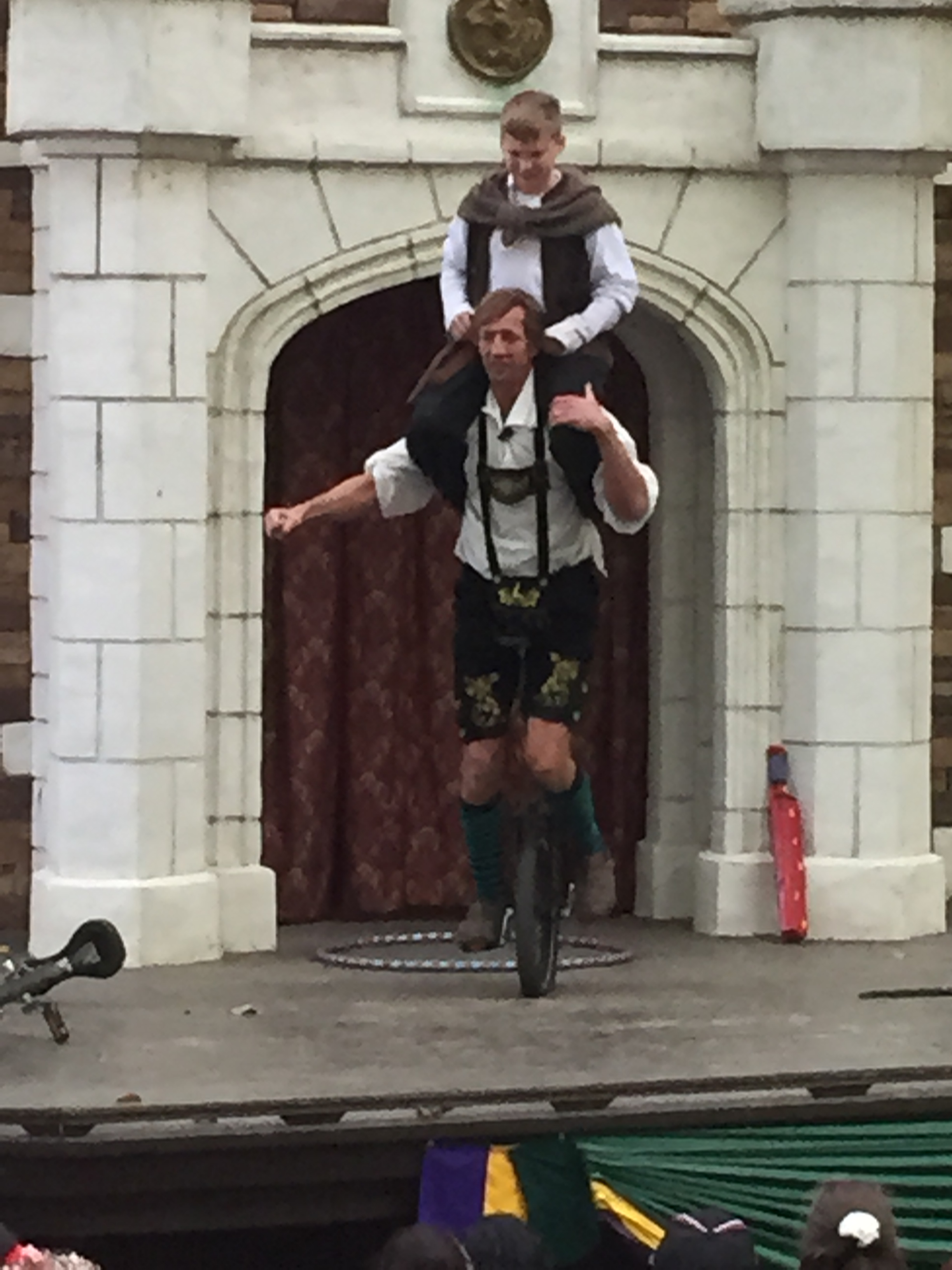My husband came up with a particularly hair-brained, nerdy idea in the spring – to dress him and Sprout up as Groot and Rocket Raccoon from Guardians of the Galaxy for a comic book convention. This is despite the fact that we have exactly zero cosplay experience. This idea would have disappeared into the Black Hole of Absurd Plans that Will Never Happen if I didn’t bring it up again last month. I believe my exact words were, “If you really want to do this for Baltimore Comic Con, we better get started.” And we did (eventually). The result was after many long nights last week, we attended Baltimore Comic Con in full Groot, Gamora and Rocket Raccoon costumes! Check out our Facebook album with photos of us and other cosplayers.
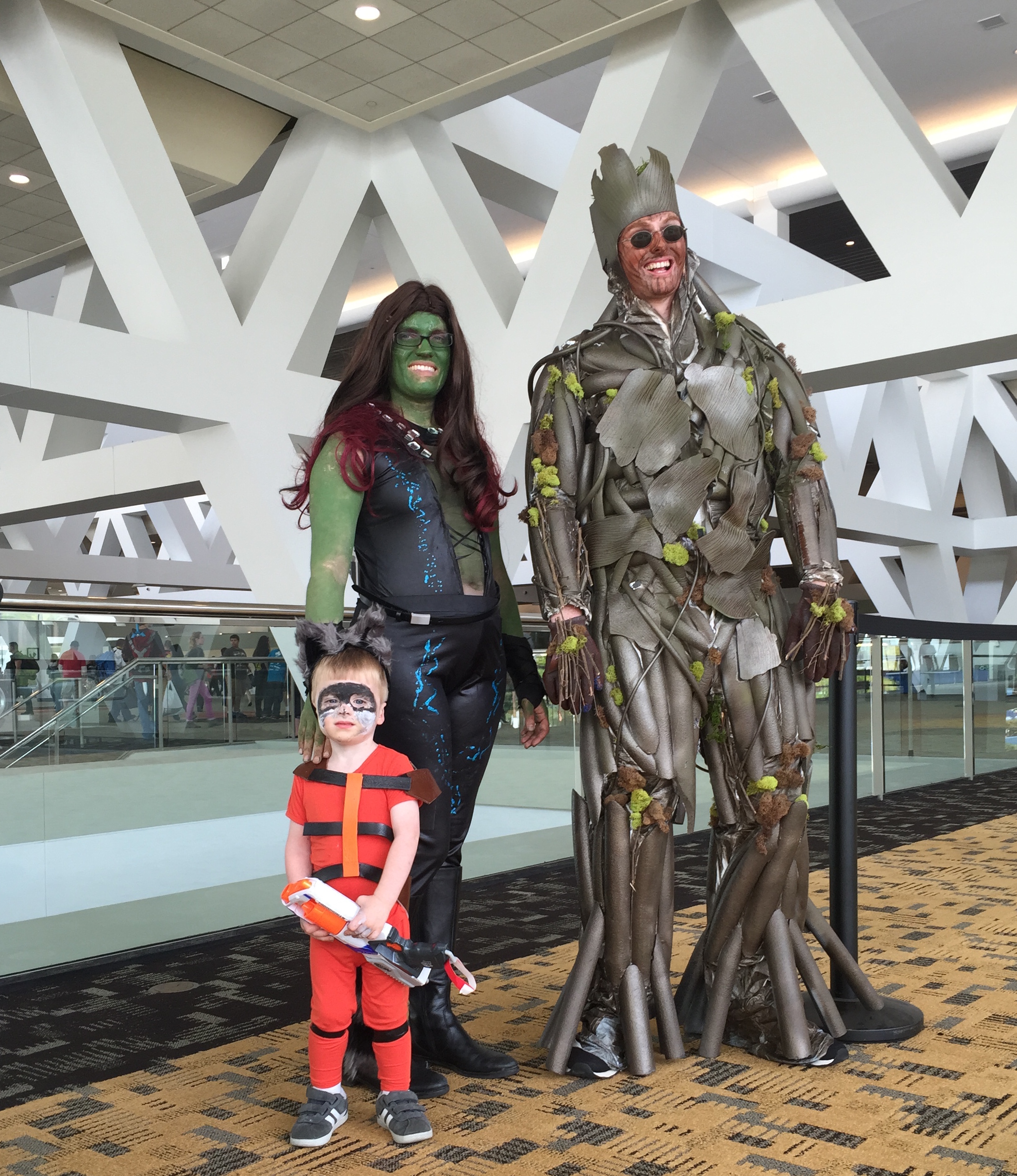
Here are a few lessons we learned, especially on cosplaying with a two-year-old:
1) Don’t be intimated by cosplayers online: Because I am a child of the Internet, I began with Google. As I told Chris, this wasn’t just for Halloween and I wanted our costumes to “not be embarrassing.” However, searching cosplay brings up a huge number of photos of screen-realistic, hugely complex costumes made by people who are or want to be professional costume designers. But looking at these beautiful but staggering cosplays, along with comments like, “The aim, for me, is not to make a costume which is clearly a costume, to have a finished product look unrealistic; the aim is to make the real world around it look unrealistic” made me want to go hide in a corner. Fortunately, I got over my neuroses and we just did the best we could.
2) On the other hand, use blogs and websites for inspiration and instruction: Once you recognize that you won’t be at the level of professional or semi-professional cosplayers, you can figure out what tips and tricks you can borrow from them. Chris got a lot of ideas for his Groot costume from this heavily-linked how-to and this less-complex but still excellent one. While this blogger’s attention to detail was way beyond my ken, her instructions for Gamora’s gauntlets were really useful. Also, think about how you can substitute out certain materials if needed. I wasn’t going to buy a bunch of dog leashes for the gauntlets, but a thick raffia ribbon Chris bought for something else was perfect.
3) If you’re dressing as a female superhero, ratchet your modesty way down and embrace your body for what it is: The first thing my mom said when she saw the movie poster of Gamora was, “Well, that’s skimpy.” Thanks for the encouragement, Mom. The funny thing is that Gamora is way more covered up than the large majority of female superheroes, including Wonder Woman, Power Girl (with her notorious “boob window”), Huntress, and even the 1970s version of Gamora. As Chris said, “At least Gamora has pants.” Even the female superheroes who aren’t showing a lot of skin, like Black Widow and Rogue from the X-Men, wear ridiculously tight clothing. As a pretty modest person who has held the opinion that “leggings are not pants” for a long time, this was very new for me. In addition, my body shape has not even a passing resemblance to Zoe Saldana’s, who played Gamora in the movie. But despite my body image woes, once I put the final outfit on, my self-consciousness started slipping away. As I saw some cosplayers that weren’t even close to the original character’s body type, being in costume is a chance to ignore the normal rules of society about what you should or shouldn’t wear.
4) If you can’t make it, fake it: I do not sew. My mom is an excellent seamstress – she made all of my Halloween costumes – but I never bothered learning from her. As Gamora’s costume required a ton of sewing, I looked for off-the-rack pieces online that I could modify to look somewhat like the original costume. I did the same thing for Rocket’s jumpsuit – I bought orange toddler pajamas instead of sewing them. This may also be useful if the needed material is particularly difficult to work with. Both spandex and faux leather – common superhero materials – are supposed to be very difficult to sew well.
5) Give yourself plenty of time to get your necessary supplies: Unfortunately, because I didn’t sew, I was at the mercy of online retailers. Despite ordering with plenty of advance notice, I didn’t receive two out of the three key pieces for my costume until four days before the convention. Similarly, don’t count on your local stores having what you need. I planned on buying green lipstick from our local costume store. I found out they were out two days before the con, too late to buy it on Amazon unless I wanted to spend an absurd amount on shipping.
6) Be prepared to spend more time and money than expected: Cosplaying takes a lot of resources, especially if you’re investing in it for the first time. Chris said, “It’s like cooking a meal, but you have to buy all of the pots, too.” But there are some ways to cut the cost, including recycled cardboard where possible, shopping thrift stores (although I find this more useful for generic costumes than specific characters) and using craft and fabric store coupons.
7) Recognize that you will be going to your local craft store at least twice as many times as you expected: As my father-in-law says, “No project is complete without at least three trips to Home Depot.” The same goes for the craft or fabric store and cosplay, although it may include the hardware store as well, depending on your costume. If you think you have everything with one trip, it’s a guarantee you don’t.
8) Heavily invest in craft foam: A lot of cosplay requires heavy-duty construction. While cardboard may work for some of it, craft foam is surprisingly versatile. It’s flexible, sturdy and easy to measure and cut. Even if your costume mainly involves sewing, you probably need accessories, which craft foam will often work for in a pinch.
9) Become best friends with your low-temp glue gun: Glue guns are to cosplay what duct tape is to home repair. I got more use out of the glue gun than I have since I was obsessed with making Pom-Pom animals in third grade. Low-temp is important for two reasons. One, you will burn yourself, multiple times. Low-temp burns hurt, but can usually be dealt with by shaking your finger vigorously and peeling off the glue afterwards. In contrast, high-temp glue will give you a nasty second-degree burn. I still have a blister on my middle finger when I hit the switch that goes from high to low temp on the glue gun. The other reason to use low-temp is that high-temp melts craft foam and similar materials like pipe insulation.
10) Buy the right tools for the job: I originally tried to use a photo glue stick to adhere the glitter that I planned to use to mimic Gamora’s shiny blue, pixelated fabric. Within a day, all of the glitter came off, and as the herpes of craft supplies, got lot lots of places it wasn’t supposed to be. I went back to Michaels and purchased glue specifically for adhering glitter to fabric, which worked much better.
11) Try on your costume early, so you have plenty of time to fix it: My original design for Sprout’s costume didn’t fit over his head. Much of the Velcro I attached to my bodysuit and vest came unglued when I put the costume on and the fabric stretched out. Chris freaked out at 11 pm on Saturday night when he put his costume on and it revealed large unpainted spots. Unless you have a full dressmakers mannequin (and even then), your costume is going to look and act much differently on the hanger or table than it does on you.
12) Acclimate your kid to both the idea of costumes and the actual costumes themselves: This may not be a problem for older kids, but at two, Sprout didn’t remember his Halloween costume at all. We had to reintroduce the idea that we could dress up as other people, but still be ourselves. “Just a costume” was repeated a number of times in our household the week before the Con. We explained over and over that daddy would be dressed up like a tree, mommy like a green lady, and Sprout as a raccoon. But even if kids know what a costume is, they may still be surprised or frightened if their parents are in a costume or makeup that makes them look dramatically different. To protect against that, we introduced the various pieces of the costumes over time. We let him wear his ears and tail around the house. I tried on my wig in front of him not long after I received it, which he declared was “Big hair!” While he first went “No no no no,” he became more intrigued by it as the two weeks went on. Similarly, I applied the full green face paint in front of him a few days before so he knew what I looked like in it. Seeing me in it also made him much more amenable to it when we needed to apply it for his raccoon eyes. Lastly, Chris showed him the full Groot costume several times before wearing it in front of him because that thing could give you nightmares. Although Sprout’s initial reaction was similar to the wig, he eventually warmed to it. When the day finally came, he was fine with all of the makeup and costumes, in part I think because we did so much preparation.
13) Be flexible, especially with kid(s): My only concern day-of was that Sprout would refuse to put on his armor, which I spent a long time working on. While he actually was fine with the armor, he did completely refuse to do something else. We signed him up for the kids’ costume contest, in the under-11 category. I figured his charm offensive and cuteness would out balance any lack of screen accuracy. But when we reached the Ballroom, he took one peek in and said, “No. No no no no no” and shook his head. With the wait for pre-judging being a hour and him without a nap, we didn’t force the issue.
14) If you have elaborate costumes, especially of well-known characters, expect to get some (or a lot, depending on the con) of attention: As I mentioned, my goal was not be embarrassed. As it turned out, we were downright popular. We had people ask for our photo at least 30 times or more. People would exclaim, “Groot!” or ask Chris, “Who are you?” so they could get the “I am Groot!” response. But my favorite was the little boy who caught me just before I was going to get changed. He yelled “Gamora! She’s my favorite.” He the turned to Sprout and said, “You’re lucky. Your mom can kick anyone’s butt in the whole galaxy.” Bless you, child.
15) Have fun!



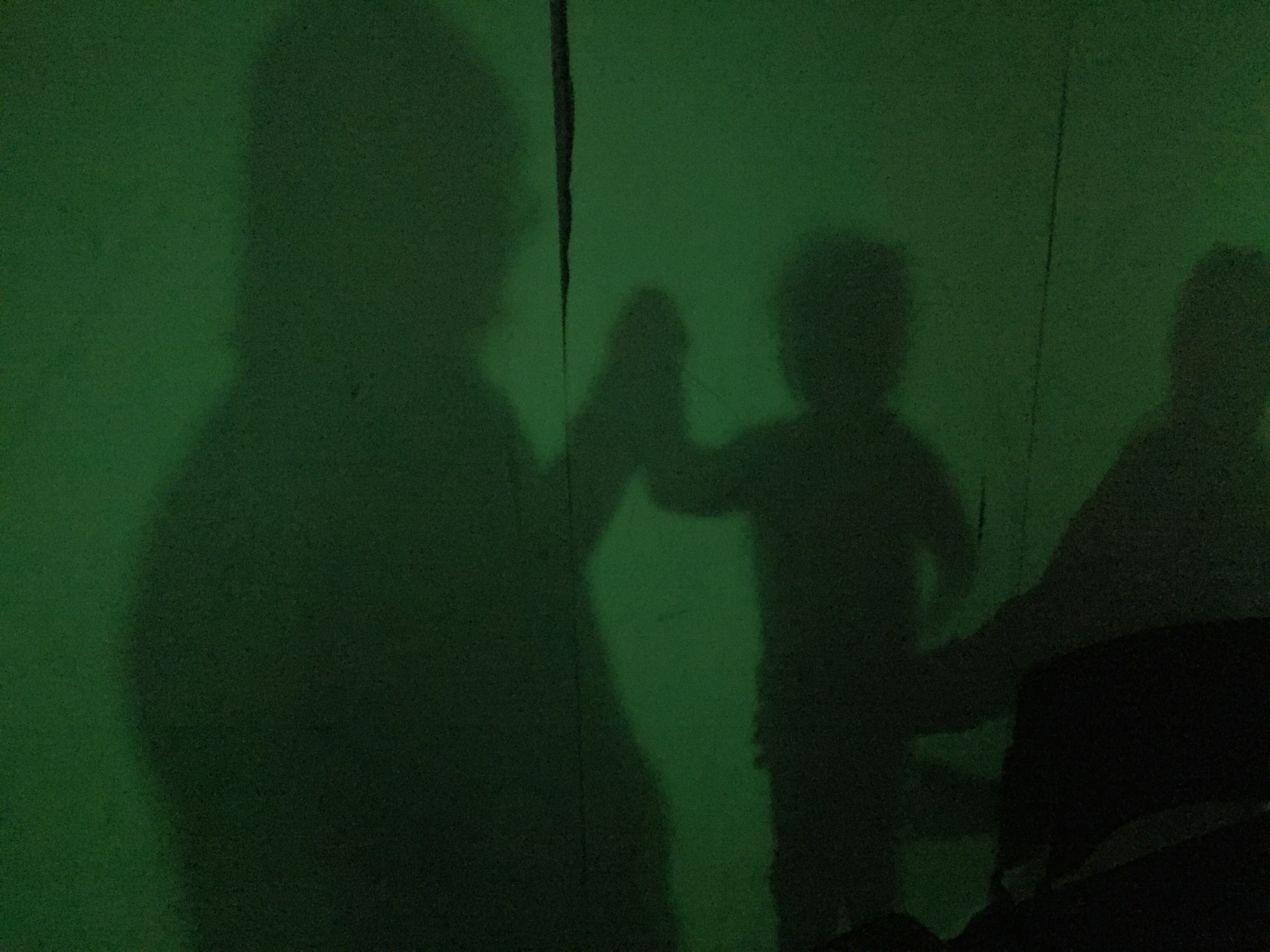 circuit. The museum even had one of the very few things I remembered from childhood, a phosphorescent wall that left your shadow “imprinted” on it after you moved away. Sprout seemed to understand why it was neat, but was not impressed enough to stand still for it more than once.
circuit. The museum even had one of the very few things I remembered from childhood, a phosphorescent wall that left your shadow “imprinted” on it after you moved away. Sprout seemed to understand why it was neat, but was not impressed enough to stand still for it more than once.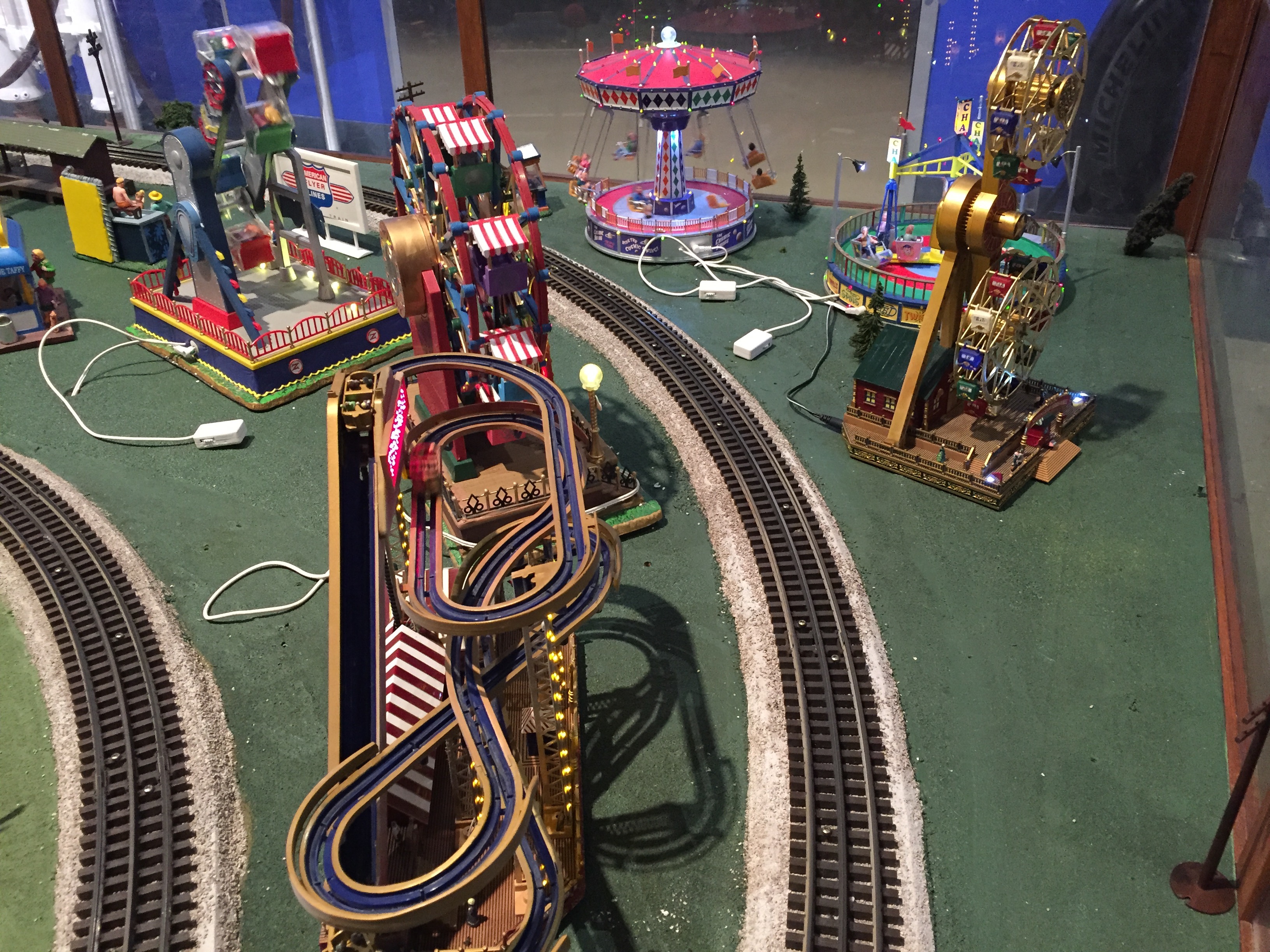 Admittedly, there was plenty to look at. In addition to a normal town setting, there were two carnivals with tiny moving rides, a river with sea monster
Admittedly, there was plenty to look at. In addition to a normal town setting, there were two carnivals with tiny moving rides, a river with sea monster 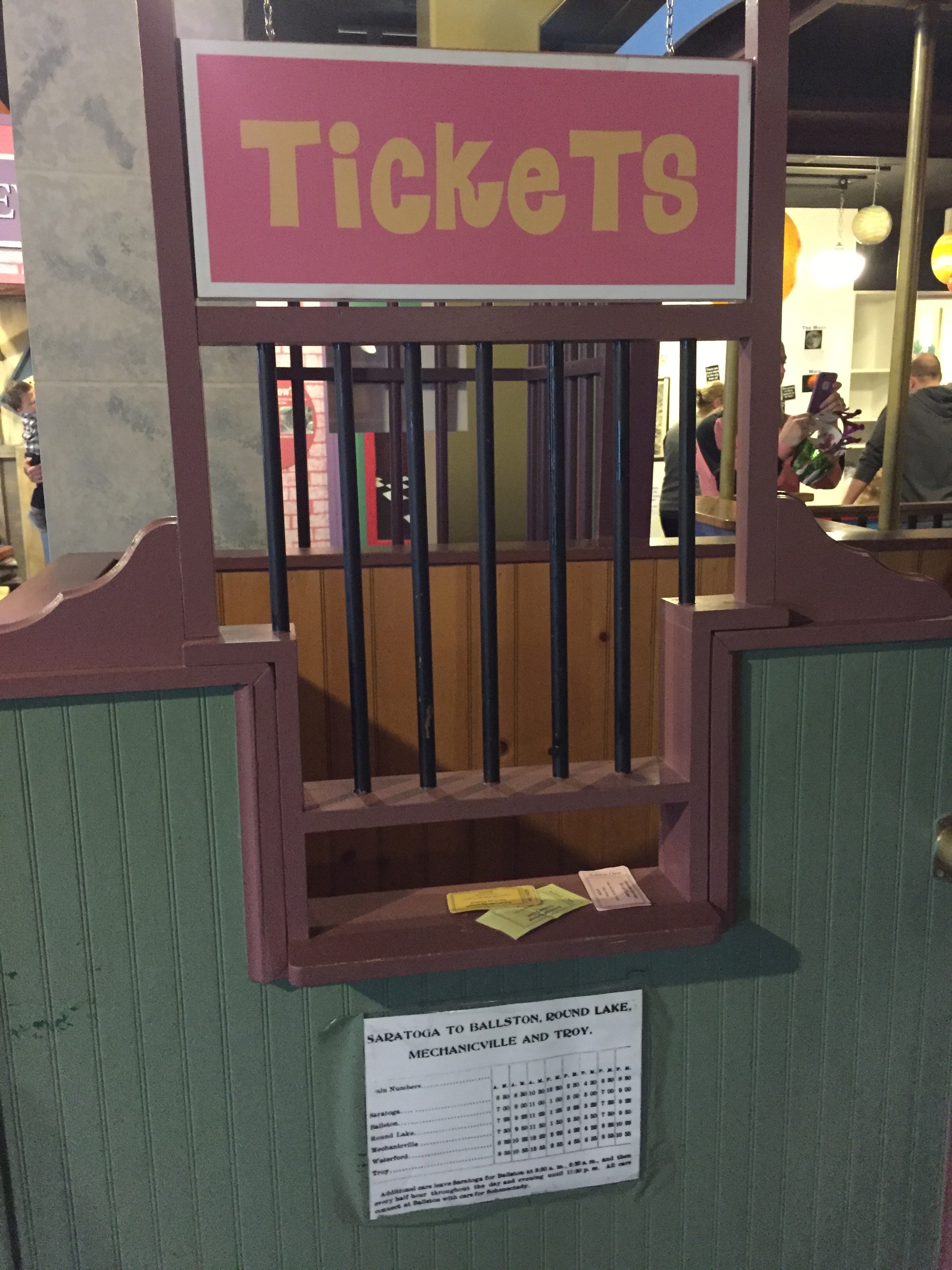 But the most unique thing was a large model of the trolleys that used to transport people between Saratoga and neighboring towns. The museum cleverly had a ticket booth with different colored tickets matching your destination. Sprout reveled in sitting in the driver’s seat, taking tickets, turning the wheel and saying “all aboard!” It was challenging coaxing him away from it so other kids could take a turn.
But the most unique thing was a large model of the trolleys that used to transport people between Saratoga and neighboring towns. The museum cleverly had a ticket booth with different colored tickets matching your destination. Sprout reveled in sitting in the driver’s seat, taking tickets, turning the wheel and saying “all aboard!” It was challenging coaxing him away from it so other kids could take a turn.



